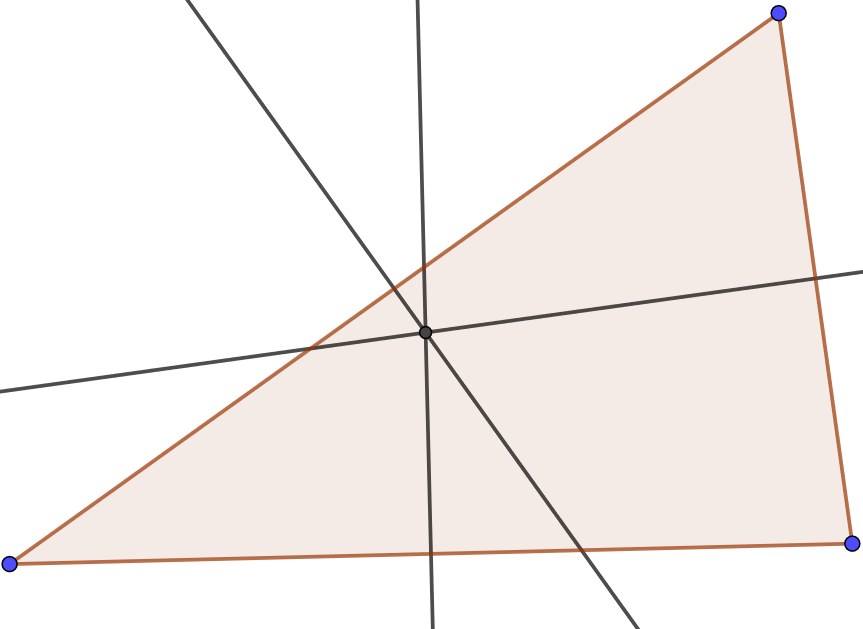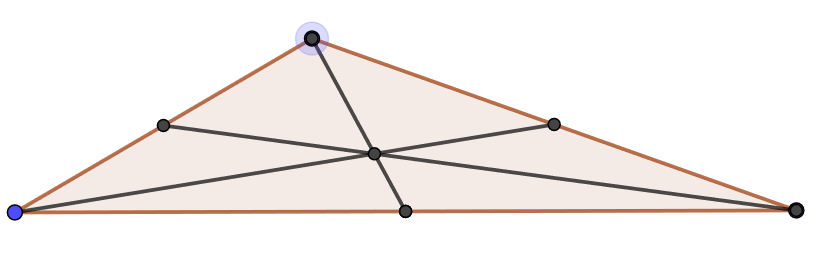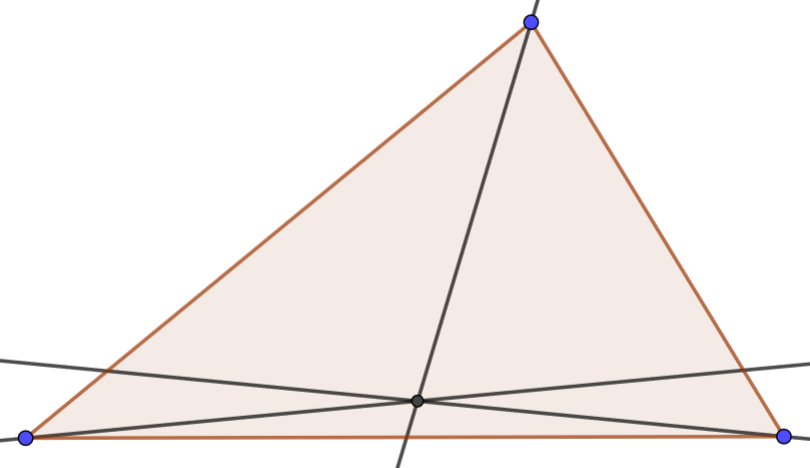3.3: Concurrente
- Page ID
- 117343
Una línea es una mediana si y solo si conecta un vértice de un triángulo con el punto medio del lado opuesto.
3.3.1 Explorar
Geogebra será útil para realizar estos experimentos. Sea lo más detallado que pueda con sus conjeturas.
Utilice el ejemplo de Geogebra\(\PageIndex{1}\) para experimentar con la relación de los tres bisectores perpendiculares de un triángulo. Mueve los vértices del triángulo alrededor. ¿Qué sigue siendo cierto sobre los bisectrices perpendiculares?

Utilice el ejemplo de Geogebra\(\PageIndex{2}\) para experimentar con la relación de las tres medianas de un triángulo. Mueve los vértices del triángulo alrededor. ¿Qué es lo que sigue siendo cierto de las medianas?

Utilice el ejemplo de Geogebra\(\PageIndex{3}\) para experimentar con la relación de los tres bisectores angulares de un triángulo. Mueve los vértices del triángulo alrededor. ¿Qué es lo que sigue siendo cierto sobre los bisectores angulares?

Utilice el ejemplo de Geogebra\(\PageIndex{4}\) para experimentar con la relación de las tres altitudes de un triángulo. Mueve los vértices del triángulo alrededor. ¿Qué es lo que sigue siendo cierto sobre las altitudes?

Constructo ∆ABC. Construye D XYZ tal que X-B-Y, Y-C-Z, Z-A-X y XY ll AC, YZ ll AB, ZX ll BC. Construye los bisectores perpendiculares de D XYZ. Lo que parece ser cierto de estos con respecto a ∆ABC.
3.3.2 Demostrar
Considerar tres puntos A, B, C con l 1 y l 2 los bisectores perpendiculares de AB y BC respectivamente. Dejar M 2 = l 2 BC. Mostrar l 1 ll l 2 implica la existencia de D = l 2 AB tal que A, B y D son colineales y BDM 2 es un ángulo recto.
Demostrar la conjetura sobre los bisectores perpendiculares.
Tres puntos determinan un círculo de manera única.
Dos medianas se cruzan en un punto 2/3 del camino por ambas medianas.
Demostrar la conjetura sobre las medianas.
Un punto está en el ángulo bisectriz de un ángulo si y solo si es equidistante de ambos lados del ángulo.
Demostrar la conjetura sobre los bisectores angulares.
Por cada triángulo existe un círculo en su interior y tangente a los tres lados.
Demostrar la conjetura sobre las altitudes.


